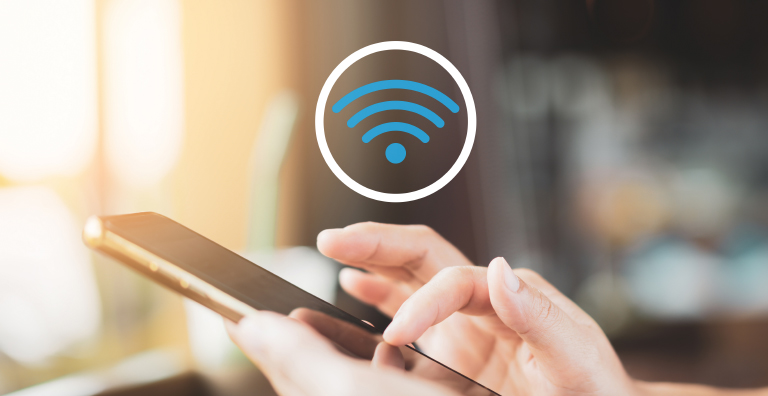The term "UWB" has been appearing in technology news articles over the past few years. Several industry groups have been established with the aim of promoting the use of UWB technology, and smartphone manufacturers have started incorporating UWB capability into their flagship phones. Even Apple’s AirTag uses UWB technology. So, what exactly is UWB, and what makes it useful?
Background
Although the term UWB (or Ultra-WideBand) can have a broader meaning in the wireless world, we will focus on the definition of UWB as the short-range, impulse radio, wireless technology specified in the IEEE 802.15.4z standard, and more specifically the subset of that standard which has been adopted by the FiRa™ Consortium, of which HID Global is a founding member.
A Closer Look
Unlike conventional wireless technologies such as Bluetooth®, Wi-Fi and FM radio, which send information by modulating a continuous carrier wave, UWB operates by transmitting streams of very short (around two nanoseconds each) pulses of carrier wave. The short duration of these pulses is what gives UWB its wide bandwidth (499.2MHz) and its name. UWB can employ carrier frequencies between 3.1GHz and 10.6GHz (although FiRa currently uses only 6.0GHz to 10.6GHz), and the transmit power is strictly limited by regulatory bodies. This results in a practical range of a few tens of meters and makes it license-exempt.
In the telecommunications world, a wide bandwidth is usually associated with high data rates. However, the more valuable feature of UWB is its ability to perform accurate, fast and reliable measurements of direction and distance (or “ranging”) between two or more UWB-enabled devices. This ability lends itself to everyday applications such as seamless access and real-time location services.
At this point, you might be thinking, “Why do we need another wireless technology? Bluetooth and Wi-Fi can already give us distance and direction measurements.” Yes, they can, but UWB offers distinct advantages over those other technologies.
Higher Accuracy
The majority of Bluetooth and Wi-Fi ranging systems use received signal strength as a proxy for distance. This is a crude approximation which is very sensitive to changes in the surroundings, requires additional signal processing and gives measurements with an accuracy of several meters at best.
UWB ranging measurements, on the other hand, are based on a time-of-flight (ToF) calculation. A device measures how long it takes for messages to “fly” across the air to a second device and back again, and then calculates the distance travelled based on the speed of light. Measurements are accurate within a few centimeters.
Faster Ranging
Bluetooth and Wi-Fi ranging involves signal filtering and processing to achieve a usable level of accuracy and gives ranging updates once every few seconds. This could tell you if a person (with a smartphone) is in a room or not.
A UWB ranging operation can take as little as a few milliseconds, resulting in potentially hundreds of ranging updates per second. This can tell you which direction that person is moving within the room and at what speed.
More Reliable
The reliability of UWB ranging stems from its wide bandwidth and error correction mechanisms. The energy of each pulse is spread over a wide frequency range, and this makes it less sensitive to narrowband interference. Error detection and correction features within the UWB message allow successful operation even if some of the pulses in a message are not received correctly.
More Secure
Secure ranging features provide a protection against so-called relay and replay attacks, where a would-be thief can fool one UWB device into thinking another UWB device is nearby. This attack has been used to steal cars by tricking the car into detecting that the “owner” is approaching and therefore unlocking the doors.
Use Cases
The FiRa Consortium’s name derives from the Fine-Ranging nature of UWB, and this underpins all of the use cases which FiRa standardizes and promotes, such as contactless door opening, asset tracking, real-time location services and social distancing. Explore the growing list of FiRa’s use cases.
Paul Cabble has been part of the HID Global team since 2009. During that time, he has been a Senior Development Engineer and Hardware Engineering Team Lead for the Physical Access Control Business Area. He is currently a Senior Principal Engineer in the central Hardware Platform Team, helping to roll out new technology to the company’s design teams. Since 2019 Paul has also been a member of several FiRa Consortium Working Groups.
